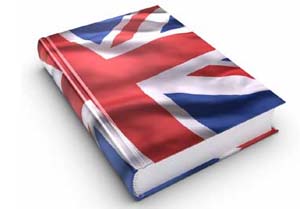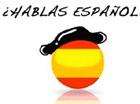 |
|
 |
|
| Visite: 1493 | Gradito: |
Leggi anche appunti:William ShakespeareWilliam Shakespeare William Shakespeare (1564 - 1616): The preromantic traditionTHE PREROMANTIC TRADITION In the 18th century prose fiction moved gradually The Anglo-Saxon periodThe Anglo-Saxon period Historical and social background The Iberians |
 |
 |
The Iberians
During the last ice age a land bridge connected the British Isles to the
European continent and the Thames and Seine rivers were connected. While the
land bridge existed, the Iberians, who lived in the area at the time, moved
freely between the two land masses. As the ice age ended and the glaciers
receded, the English Channel was formed and Britain was permanently separated
from the continent. Naturally, some tribes of Iberians remained on the island
to inhabit it as permanent residents.
The First
Invasion: The Celts
About 700 B.C. the Celts invaded the island. This is
the first known successful invasion of the island. The invasion, which occurred
over a period of about 400 years, ended about 300 B.C. Whereas the Iberians
were still in a Bronze Age civilization, the Celts had advanced into the Iron
Age. The Celts' superior weapons, more powerful bodies, and warlike
dispositions were more than the Iberians could cope with. The Iberians who
survived were pushed into the western and northern wildernesses (Wales and
Scotland). Eventually, a major Celtic tribe, the Brythons, came to be know as
Britons and the island as Britain.
The Second
Invasion: The Romans
In 55 B.C., Caesar attempted to invade Britain but
failed. He tried again in 54 B.C. and succeeded but did not occupy or colonize
Britain. In A.D. 43, Claudius I. invaded and conquered the whole island, except
for indomitable Scotland. Under the Roman occupation, Christianity was
introduced and the Britons became peaceful, depending on the Romans for
protection. In the fifth century the Roman legions left Britain to attend to
military matters at and around Rome.
The Third
Invasion: The Angles, Saxons, and Jutes
With the departure of the Romans in the first half of
the fifth century, the Picts, who had been held in check up to this time by the
Romans, began to raid the northern Britons. According to the Anglo-Saxon
Chronicle, in
The
Formation of Anglo-Saxon England
During the period of the Anglo-Saxon invasion, the
Angles, Saxons and Jutes eventually came to be collectively called the English,
which is derived from 'Angles.' The Jutes and Angles, both being of
Danish origin, appear to have intermixed with the result that the Jutes lost
their identity. The Anglo-Saxons formed seven major kingdoms, referred to as
the heptarchy by historians. These were the Angle kingdoms of
Northumbria, Mercia, East Anglia, and Kent; and the Saxon kingdoms of Essex,
Sussex, and Wessex. Other, smaller kingdoms emerged from time to time but were
swallowed up by the heptarchial kingdoms. By the year 600, the three largest
kingdoms; Northumbria, Mercia and Wessex, dominated the others. The kings were
continuously at war with one another to attain supremacy over their neighbors.
The Fourth
Invasion: The Danes (Vikings)
In the year 789, three Danish (Viking) ships landed
at Dorchester in Wessex. The Danes promptly killed a representative of the
king, probably pillaged Dorchester and killed more people, then sailed away. In
793, they raided the monastery on the island of Lindisfarne, killing all the
monks who inhabited that place. The Vikings didn't bother with England again
until 43 years later, in 836. They quickly learned that England was an easy
target and made it a point to raid the coast every spring. Although these raids
were made by Norwegians and Swedes as well as Danes, they were all Danes as far
as the English were concerned. For 15 years they were content with raiding the
coast for booty and slaves. In 851, however, instead of sailing back to Scandinavia,
a raiding party wintered over on the Isle of Thanet, off the southeast coast of
England. Then, in 855, an entire Danish army wintered over on the Isle of
Sheppey. With an entire army living just off the coast, the Danes changed their
tactics and a true invasion commenced.
In 865, the Danes landed in East Anglia. With little or no show of resistance, the king surrendered and gave the Danes all that they asked for-including horses. With horses, the Danes could penetrate faster and further than ever before and by 866 had captured York, the capital of Northumbria. Within a few years they also took Mercia. Wessex only remained to be taken and the Danes would have conquered all of Anglo-Saxon England. However, the Danes made a military blunder by splitting their forces in two and King Alfred of Wessex only had to contend with half of them, led by King Guthrum, when they attacked. In 878, Alfred met Guthrum at Edington and defeated him decisively. Guthrum agreed to become a Christian and to remove his army from Wessex.
The Danes remained in England; however, they were confined to a large area in the center of the island that was sandwiched between Anglo-Saxon kingdoms; Northumbria to the north and Wessex and Mercia to the south-west, which was called the Danelaw. The southern border of the Danelaw ran roughly on a line from the mouth of the Thames (just north of London) to present day Rhyl, on the coast of the Irish Sea. The northern border was rather jagged and included about one-half of Northumbria and the southern portion of present day south-western Scotland. The city of York was in the Danelaw. Alfred had become the most powerful of the Anglo-Saxon kings and became known as Alfred the Great. Although it is commonly believed that Alfred was the first king to rule all of England, he never managed to do this.
The Danes
Conquer England
Although Athelstan had subdued the Danelaw and became King of England, the
Danes, or Vikings, were still a threat and the Danish invasion had not come to
a conclusion. Athelstan died in 939 and was succeeded as follows: by his
two brothers, Edmund (939-946) and Edred (946-955); then by Edmund's sons, Edwy
(955-959) and Edgar (959-975). Edgar had two sons: Edward, 13, and Ethelred, 9.
Edward became king and in 979, was murdered by Ethelred's supporters, and
Ethelred became king. Ethelred was officially Ethelred II., is known to history
as Ethelred the Unready, but was originally Ethelred the Unred. The name
Ethelred, in Anglo-Saxon, means 'noble counsel.' the word
'Unred' is the antonym of Ethelred and means 'no counsel.'
As can been seen, Ethelred's contemporaries were making sport with his name by
constructing such an oxymoron. Based on what was to happen during his reign, it
is obvious that Ethelred was either counseled very badly by his advisors or he
was counseled wisely but unwisely disregarded that counsel.
In 981, approximately the middle of Ethelred's reign, the Danes (from Denmark) began to raid England again. Between raids, they would often sail across the Channel to take refuge in Norman ports. Although the Normans didn't raid England themselves and were on comparatively good relations with the English, their Viking heritage caused them to assist their kinsmen from Denmark, much to the chagrin of Ethelred. In 991, Ethelred appealed for Papal intervention, with the result that the Pope persuaded Ethelred and the current Duke of Normandy, Richard II., to agree to not assist one another's enemies. However, the Danes continued to raid England and Richard continued to turn his head as his people assisted them between raids. Finally, in desperation, Ethelred decided to make Richard's sister, Emma, his queen, reasoning that the marriage link between the the English royal house and the house of the Duke of Normandy would encourage Richard and his successors to stop assisting the Danish raiders. This marriage took place in 1002 but, unfortunately for Ethelred, did not save the kingdom. The marriage would also figure prominently in events that would occur 64 years later and result in the battle of Hastings.
In
The Norman conquest
William, duke of Normandy, defeated Harold of Wessex near Hastings in 1066. During his kingdom William had to resist many rebellions.
The English language evolved into Middle English dropping German and French inflections.
until the 14th century in England were spoken three languages: French among the nobility, Latin among the clergy and English among the common people.
The Battle of Hastings
The First
Attack
The battle began sometime after
The Bretons, being the left-hand division and on the most gently sloping ground, had reached the English well ahead of the center and right and were overwhelmed by the unexpected fierceness of their adversaries. The Breton cavalry was quickly beaten off and galloped back to their starting position to regroup. They were followed by a crowd of scared archers, infantrymen, unhorsed knights, and riderless horses. The Breton division had disintegrated into complete disorder.
The sight of the Bretons fleeing in disorder caused a great number of Harold's less disciplined fyrdmen to burst through the shield-wall and pursue them down the hill. With this mass of English streaming down the hill, William's central and right divisions, which were now in the dangerous position of being attacked on their left flank, wisely stopped their forward advance and pulled back until they were on line with the Breton division.
Restoring order within the Norman division, William quickly ordered those knights to attack the exposed flank of the fyrdmen and cut them to pieces. The knights quickly herded all but a few of the unfortunate fyrdmen onto a small hill and there slaughtered them. Those fyrdmen who were lucky enough to escape were among the last to leave the English shield-wall and therefore had the best chance of regaining its safety.
There was now a pause in the battle.
During this lull in the battle, William set his attention to regrouping the Breton division. This division consisted of the least experienced of his troops, comparable in this regard to the fyrdmen, which explains why they panicked after their first meeting with the English. William admonished their commander to ensure that, during the next attacks, his division should stay on line with the central division during the advance; not to get ahead of it or behind it. This cohesion between the two divisions would serve to protect the Breton division. The archers refilled their quivers from the supply wagons in the rear.
Harold utilized the lull to warn the fyrdmen against committing such a foolhardy act again. The English dead were moved to the rear of the shield-wall and the gaps that they left were filled by the best and most experienced troops that were left. The dead and wounded of William's army who were within the shield-wall were moved in front of it to provide an obstacle.
The Second and Succeeding Attacks William commenced his second attack shortly before noon. It was a repeat of the first attack; first archers firing their arrows straight at the shield-wall, followed by the infantrymen slogging up the hill to fight hand-to-hand with the English, then the cavalry in an attempt to break through the shield-wall with their sheer weight and superior stance. This time, however, the Breton division did not recoil and the attack came off smoothly, as planned.
William maintained this rhythm through the early afternoon. The repeated attacks were causing him a great number of casualties but he could clearly see that the English line was thinning and that it would only be a matter of time before he would finally breach it and win the battle. During this period, Harold's younger brothers, Leofwin and Gyrth, were killed by Norman knights who broke through the shield-wall and penetrated into the deepest English ranks. Also during this period, William joined his knights on a charge and was unhorsed when a Housecarl axed his horse. His knights protected him until he was again mounted.
As the day progressed, all of the combatants were becoming exhausted. Harold's only hope now lay in the arrival of nightfall, at about 6 p.m., or William's inability to continue the battle due to the heavy losses he was taking. It was now shortly before 5 p.m. and the armies had been fighting for about seven hours.
The Last
Assault
William had a brilliant idea that would prove decisive. Instead of his archers
firing directly at the English shield-wall, which had been having little
effect, he directed them to aim very high so that their arrows would arc over
the shield-wall and plunge into the ranks behind them. All of a sudden, the
protection that the shield-wall had afforded was gone and Harold began taking
tremendous casualties, even among those at his command post. The shield-wall
collapsed as casualties mounted and as men decided to try to save their lives
rather than die on the spot. At about 5 p.m., with the shield-wall fast
disintegrating, a band of Norman knights passed through it, penetrated to
Harold's command post, and killed him. One of these knights, Ivo of Ponthieu,
went so far as to mutilate Harold's body by hacking off his limbs. As a reward,
William sent him back to Ponthieu in disgrace. Harold's death signaled victory
for William.
The English
Crumble
The day after the battle, Sunday, 15 October 1066, the Normans buried their
dead but left the English dead unburied. William then returned to Hastings and
remained there for several days, expecting another English army to come and
challenge him. None appeared.
The English were confused and didn't know what to do, so they did nothing. Earls Edwin and Morcar had finally decided to support Harold and were on their way south with their own armies when they were told of the results of Hastings. They turned back.
In late October, after waiting several days for an attack that would not come, his men recouperating from the battle, and receiving reinforcements, William decided to leave the Hastings Peninsula to capture England's three capitals: Canterbury (the religious capital), then London (the commercial capital), and finally Winchester (the political capital).
On
Christmas day,
 |
| Appunti su: |
|
| Appunti Tedesco |  |
| Tesine Francese |  |
| Lezioni Spagnolo |  |